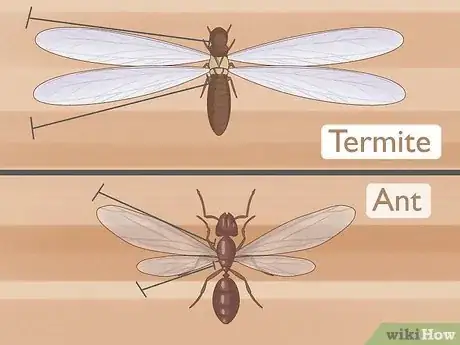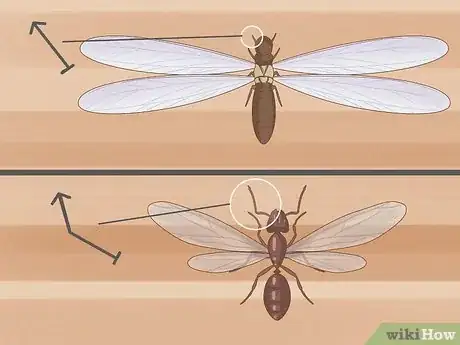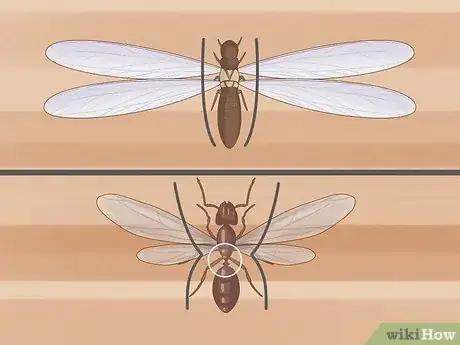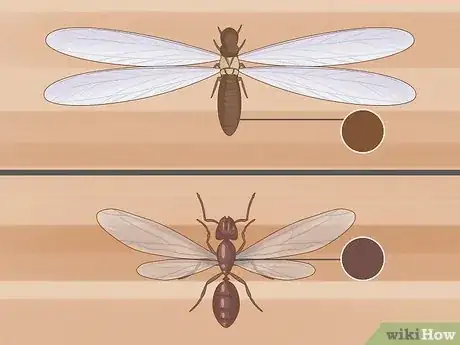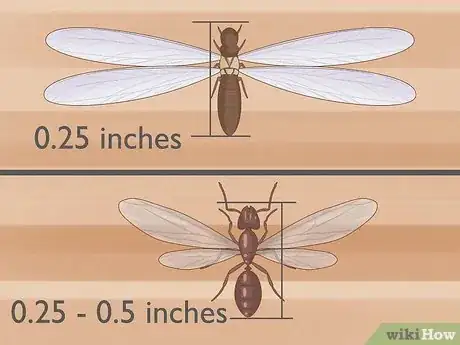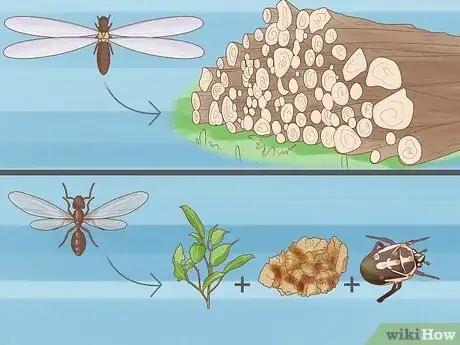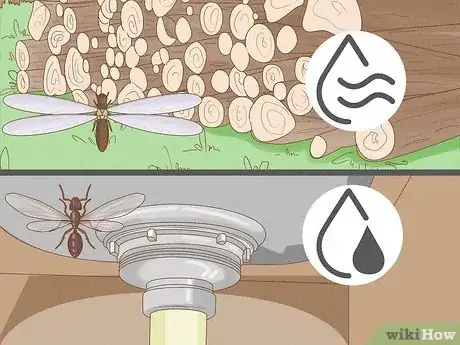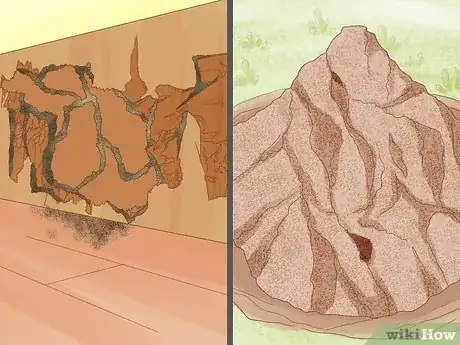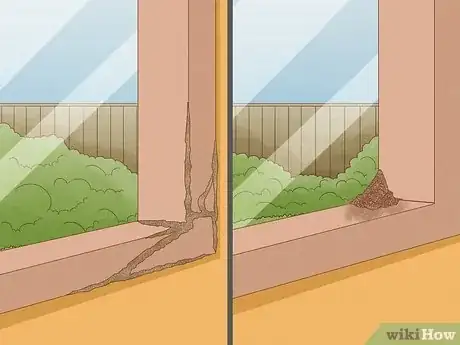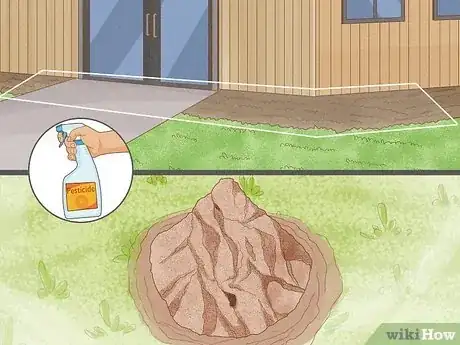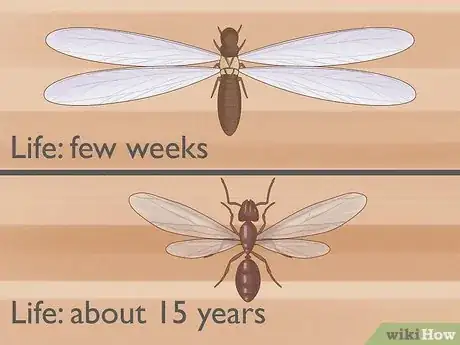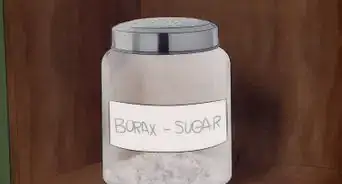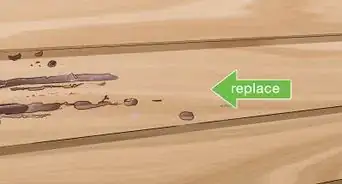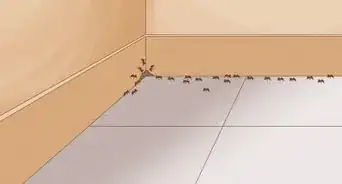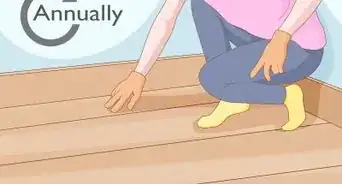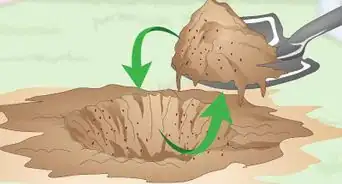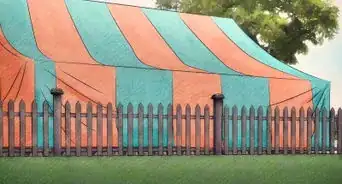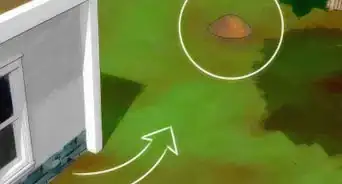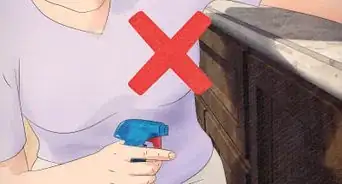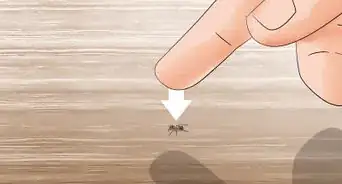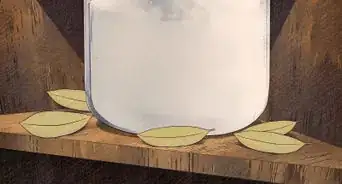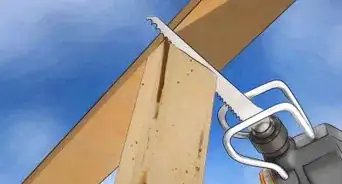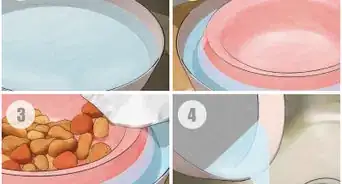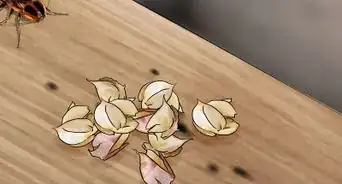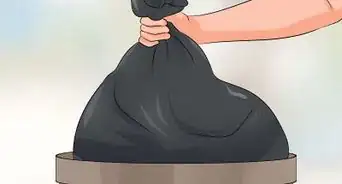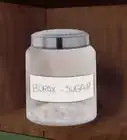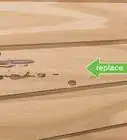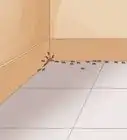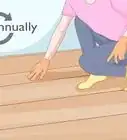This article was co-authored by Hussam Bin Break and by wikiHow staff writer, Devin McSween. Hussam Bin Break is a Certified Commercial Pesticide Applicator and Operations Manager. He and his brother Hussam co-founded Diagno Pest Control in the greater Philadelphia area in 2018, and have since expanded their services to include the New Jersey market. Diagno Pest Control has received Home Advisor's Top Rated and Elite Service Badges for quality of work and customer service.
There are 12 references cited in this article, which can be found at the bottom of the page.
You’re about to head out the door when you see a winged insect climbing across your windowsill. It sure looks like an ant, but could it actually be a termite? While these 2 insects look similar at first glance, there are actually key differences that make them easy to tell apart. In this article, we’ll go over these differences so you can determine which one you might be dealing with. Both of these insects can cause damage to your home, so we’ll also go over how to treat each one.
Things You Should Know
- Termites have front and back wings that are the same length, while a flying ant’s front wings are longer than their back ones.
- A flying ant’s antennae are bent, or elbow-shaped, while a termite’s antennae are straight.
- Flying ants have a noticeable, cinched-in waist while a termite’s body is about the same width all the way across.
- Control for termites by spraying pesticide around the foundation of your home. To kill flying ants, spray pesticide directly into their nest.
Steps
Expert Q&A
-
QuestionWhat can I put around my house to keep termites away?
 Hussam Bin BreakHussam Bin Break is a Certified Commercial Pesticide Applicator and Operations Manager. He and his brother Hussam co-founded Diagno Pest Control in the greater Philadelphia area in 2018, and have since expanded their services to include the New Jersey market. Diagno Pest Control has received Home Advisor's Top Rated and Elite Service Badges for quality of work and customer service.
Hussam Bin BreakHussam Bin Break is a Certified Commercial Pesticide Applicator and Operations Manager. He and his brother Hussam co-founded Diagno Pest Control in the greater Philadelphia area in 2018, and have since expanded their services to include the New Jersey market. Diagno Pest Control has received Home Advisor's Top Rated and Elite Service Badges for quality of work and customer service.
Pest Control Professional I always recommend that people leave at least 6 to 12 inches clear around the house—no vegetation, no trees, or anything close to the house. Also, if there is always acidic rain in your region, you want to have this water going away from the house, otherwise, the moisture will create the perfect environment for termites.
I always recommend that people leave at least 6 to 12 inches clear around the house—no vegetation, no trees, or anything close to the house. Also, if there is always acidic rain in your region, you want to have this water going away from the house, otherwise, the moisture will create the perfect environment for termites.
Warnings
- Always read the directions provided on pesticide before using it, as directions are different for each kind.⧼thumbs_response⧽
References
- ↑ https://extension.umd.edu/resource/ants-and-termites-how-tell-difference
- ↑ https://citybugs.tamu.edu/factsheets/landscape/ants/ent-2012/
- ↑ https://hortnews.extension.iastate.edu/ant-swarming
- ↑ https://extension.umd.edu/resource/ants-and-termites-how-tell-difference
- ↑ https://extension.umd.edu/resource/termites
- ↑ https://hortnews.extension.iastate.edu/ant-swarming
- ↑ http://extension.msstate.edu/content/06-termite-biology-eastern-subterranean-termites-and-formosan-termites
- ↑ https://extension.unh.edu/resource/carpenter-ants-fact-sheet
- ↑ https://ucanr.edu/blogs/blogcore/postdetail.cfm?postnum=25185
- ↑ http://entomology.ca.uky.edu/ef603
- ↑ https://extension.missouri.edu/publications/g7423
- ↑ http://extension.msstate.edu/content/06-termite-biology-eastern-subterranean-termites-and-formosan-termites
- ↑ https://extension.umd.edu/resource/termites
- ↑ https://extension.missouri.edu/publications/g7423
- ↑ https://extension.entm.purdue.edu/publications/E-4/E-4.html
- ↑ https://extension.unh.edu/resource/carpenter-ants-fact-sheet
- ↑ https://www.smithsonianmag.com/science-nature/how-can-ant-and-termite-queens-live-so-long-180979408/
- ↑ https://www.nhm.ac.uk/discover/when-why-winged-ants-swarm-nuptial-flight.html
- ↑ http://extension.msstate.edu/content/06-termite-biology-eastern-subterranean-termites-and-formosan-termites
